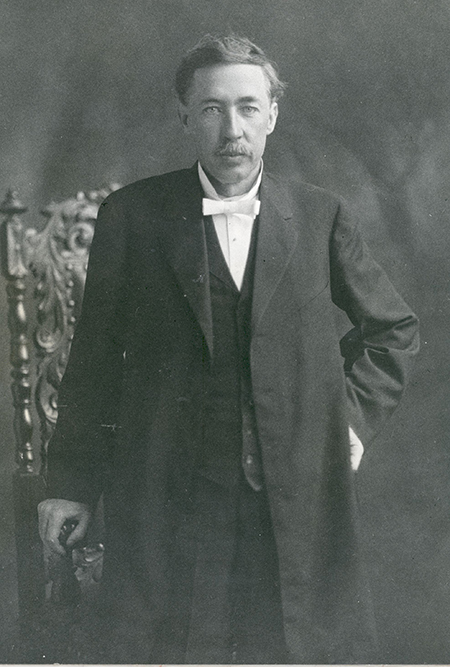
CRUCE, LEE (1863–1933).
Lee Cruce was Oklahoma's second governor (1911–15). He was born July 8, 1863, near Marion, Kentucky. He briefly attended Vanderbilt University and then returned to Kentucky, becoming a member of the bar in 1888. In 1891 Cruce moved to Ardmore, Indian Territory, and worked in the law firm of Johnson, Cruce, and Cruce. In June 1893 he married Chickie La Flore, thus becoming an intermarried citizen of the Chickasaw Nation. They had one daughter.
Cruce entered politics in 1899 when he was elected alderman of Ardmore's first ward. Leaving the law firm in August 1901, he became a cashier at the new Ardmore National Bank and two years later became bank president. He favored single statehood and raised funds to send a lobbying group to Washington, D.C. Cruce announced his candidacy for Oklahoma governor in July 1906 but lost his bid to Charles N. Haskell, a prominent member of the recent state Constitutional Convention. However, in 1910 he won the Democratic Party primary over William H. "Alfalfa Bill" Murray and two lesser-known candidates. In the general election Cruce prevailed over Republican Joseph McNeal and Socialist candidate J. T. Crumbie.
Governor Cruce proposed and gained legislation that changed banking regulations, reorganized the Board of Education, provided for better enforcement of prohibition, and made gambling a felony. He suggested reducing the number of colleges in an effort to reduce state spending. He narrowly missed impeachment proceedings based on charges of nepotism, filling appointive positions without consulting the legislature, and not informing the legislature about indiscretions in the offices of state auditor, state printer, and state insurance commission. Cruce supported municipal Sunday closing laws, known as "Blue Laws." In 1913 the state legislature passed House Bill Number Fifty that prohibited many activities on Sundays. Cruce favored Jim Crow (racial segregation) laws, but he opposed capital punishment and commuted the sentences of nineteen criminals, including African Americans, to life in prison rather than impose the death penalty. He was the first Oklahoma governor to use martial law, sending Adj. Gen. Frank Canton and the Oklahoma National Guard to prevent racetrack betting in Tulsa on April 14, 1914. Cruce also sent the National Guard to stop prizefighting on five occasions. During Cruce's tenure the Oklahoma Highway Department was established in 1911 as part of a national trend for better roads. Before he left office, ground was broken for a new capitol building in northeast Oklahoma City.
Cruce returned to Ardmore, becoming wealthy after oil was discovered on his property. In 1930 he made an unsuccessful bid for the U.S. Senate. He died on January 16, 1933, while visiting his daughter in Los Angeles. After funeral services in Ardmore, Oklahoma, he was buried in Ardmore's Rose Hill Cemetery.
See Also
BLUE LAWS, BOXING, DEMOCRATIC PARTY, GOVERNMENT AND POLITICS, PROHIBITION, SEGREGATION, STATEHOOD MOVEMENT, TWENTIETH-CENTURY OKLAHOMA






